 
|
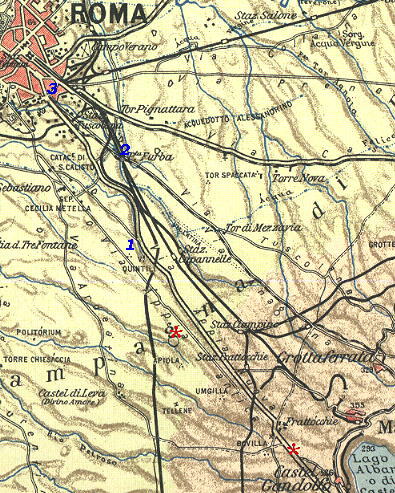 | ||
(the numbers in the map refer to a walk to Porta Furba).
Torre in Selci
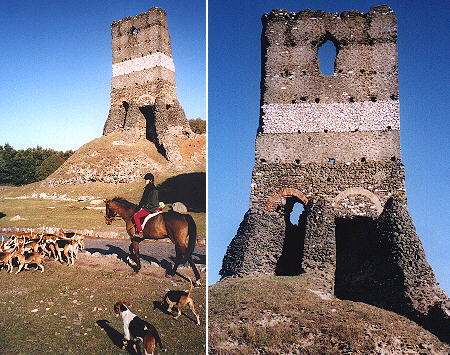 | ||
The name refers to the flints (selci) of the Roman road
which were used in the XIIth century to erect a tower
on top of a Roman tomb. Via Appia Antica is on a slightly higher ground than Via
Appia and this tower had a commanding view over it.
In the Countryside
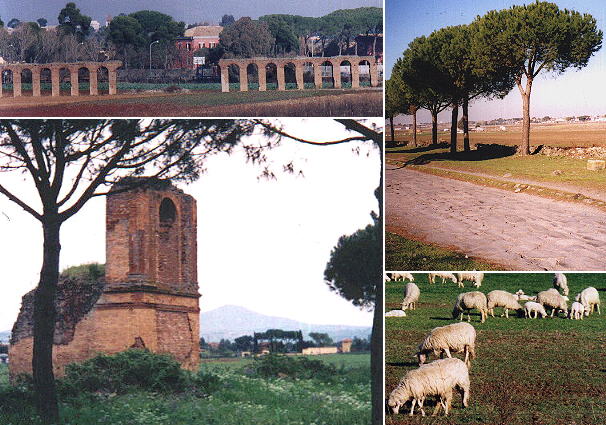 | ||
After Torre in Selci there are less monuments to see and not many people around. To the left one sees the arches of the aqueduct which provided water to Villa dei Quintili. There are several stretches of basolato, the original pavement of Via Appia.
Colonne d' Ercole
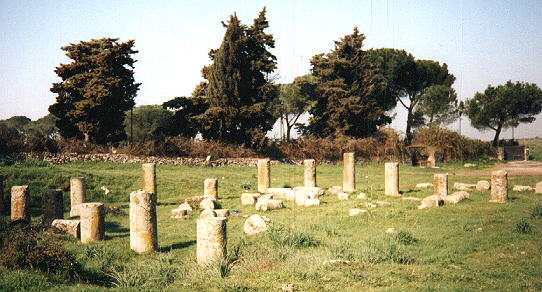 | ||
These columns are what is left of the precinct of a
temple built by Domitianus in honour of Hercules half-way between Rome and Alba (Albano).
Tomb of Quintus Verannius
This little tomb (Ist c.) had two storeys, a burial-chamber below and a
meeting place for the funeral ceremonies above. The bricks of the columns
were of different colors: darker for the columns
and lighter for the walls. The design of the columns inspired many
artists of the Renaissance. Close to this building there is a later (IVth c.) circular tomb
which was converted into a little church and then used as a granary.
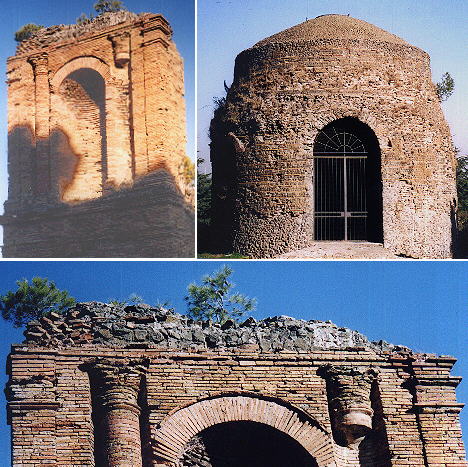 | ||
Both buildings were the subject of many paintings and prints (including one by Piranesi). In 1789, Sir Richard Colt Hoare a rich Englishman, admirer of Horace, decided to follow the itinerary described by the poet in Satire 5 of Book 1, a record of the journey he made to Brindisi in 38 B.C.
Colt Hoare invited Carlo Labruzzi, a young painter and draughtsman, to join him in his journey along Via Appia and to draw its principal monument. Here below is the drawing of the two tombs (they are not actually as close as shown).
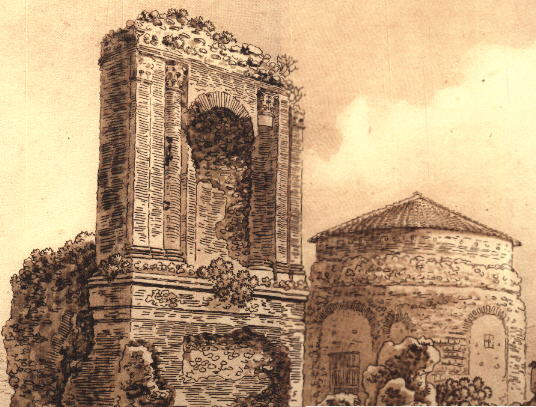 | ||
Abandoning the XXIst Century
 | ||
After crossing Via di Fioranello, which leads to the nearby Ciampino Airport,
Via Appia Antica gets narrower and is unpaved. Although one can hear the
noise of the traffic in Via Appia Nuova, the site seems to belong to
another century. The ruins scattered around give the same emotions which were experienced by
the travellers of the past.
Tomb of Gallienus
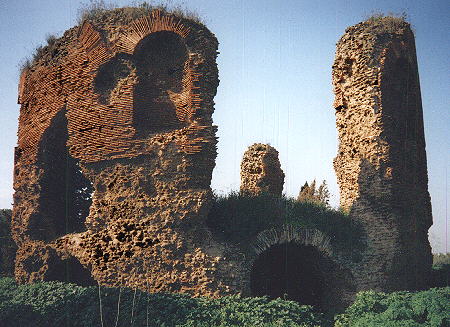 | ||
This large brickwork monument is thought to be the tomb
of the Emperor Gallienus. We are at the IXth mile of Via Appia: here
was the first "Mutatio" where mail messengers changed their horses.
Towards Frattocchie
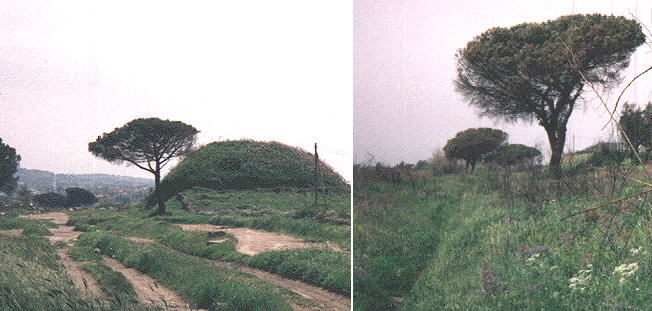 | ||
The last part of Via Appia Antica continues to be flanked by the ruins of tombs some of which are of the size of a little hill. Via Appia was a straight line from Porta S. Sebastiano to Albano: in the picture above it is possible to notice Via Appia entering Albano a few miles from the location where the picture was taken. At some points the path gets very narrow.
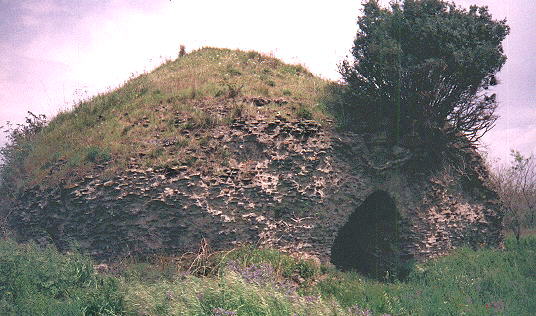 | ||
In Frattocchie Via Appia Antica ends with some scenery.
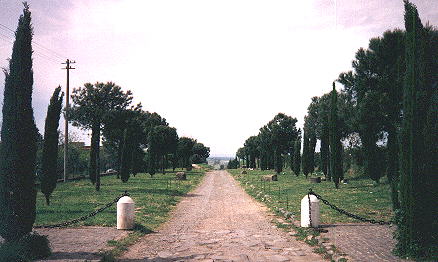 | ||
You can see these other sections of Via Appia:
from S. Sebastiano to Cecilia Metella
from Cecilia Metella to Torre in Selci
or you can move on to Albano.
 or to
The Coats of Arms of the Popes or
to My Home Page on Baroque Rome or to
My Home Page on Rome in the footsteps of an XVIIIth century traveller
or to
The Coats of Arms of the Popes or
to My Home Page on Baroque Rome or to
My Home Page on Rome in the footsteps of an XVIIIth century traveller
All images © 1999 - 2003 by Roberto Piperno. Write to romapip@quipo.it
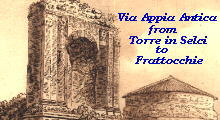 VIA APPIA ANTICA FROM TORRE IN SELCI TO FRATTOCCHIE
VIA APPIA ANTICA FROM TORRE IN SELCI TO FRATTOCCHIE